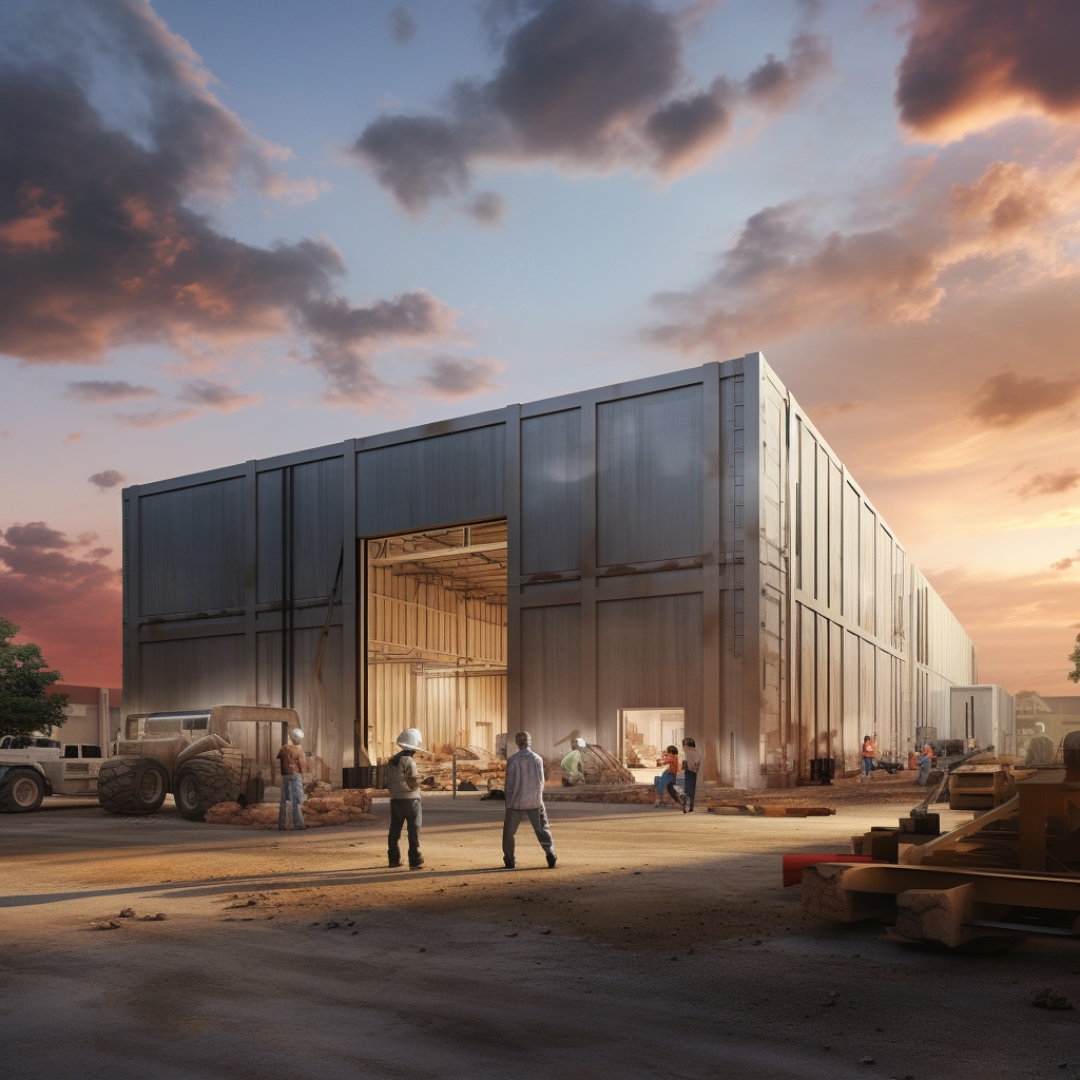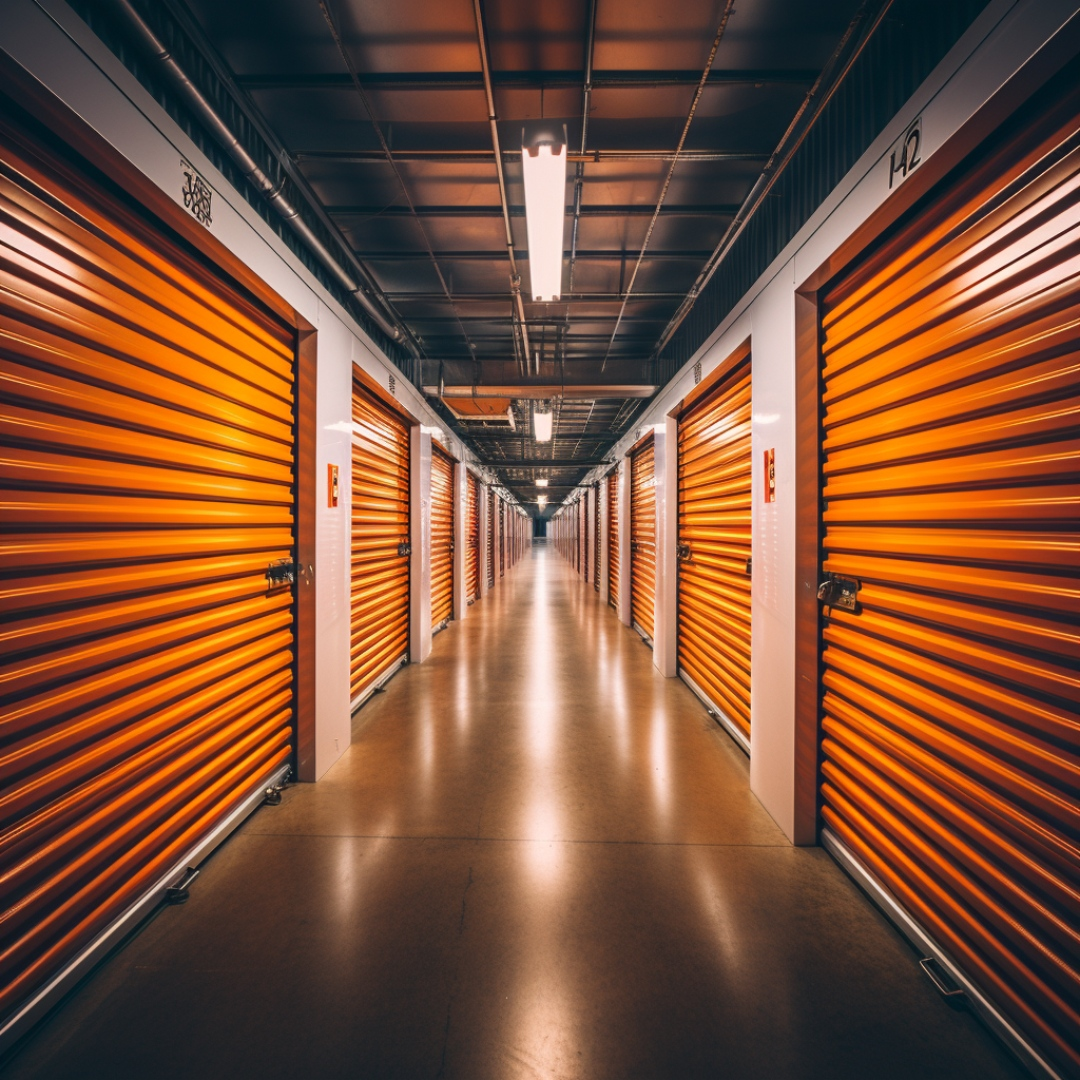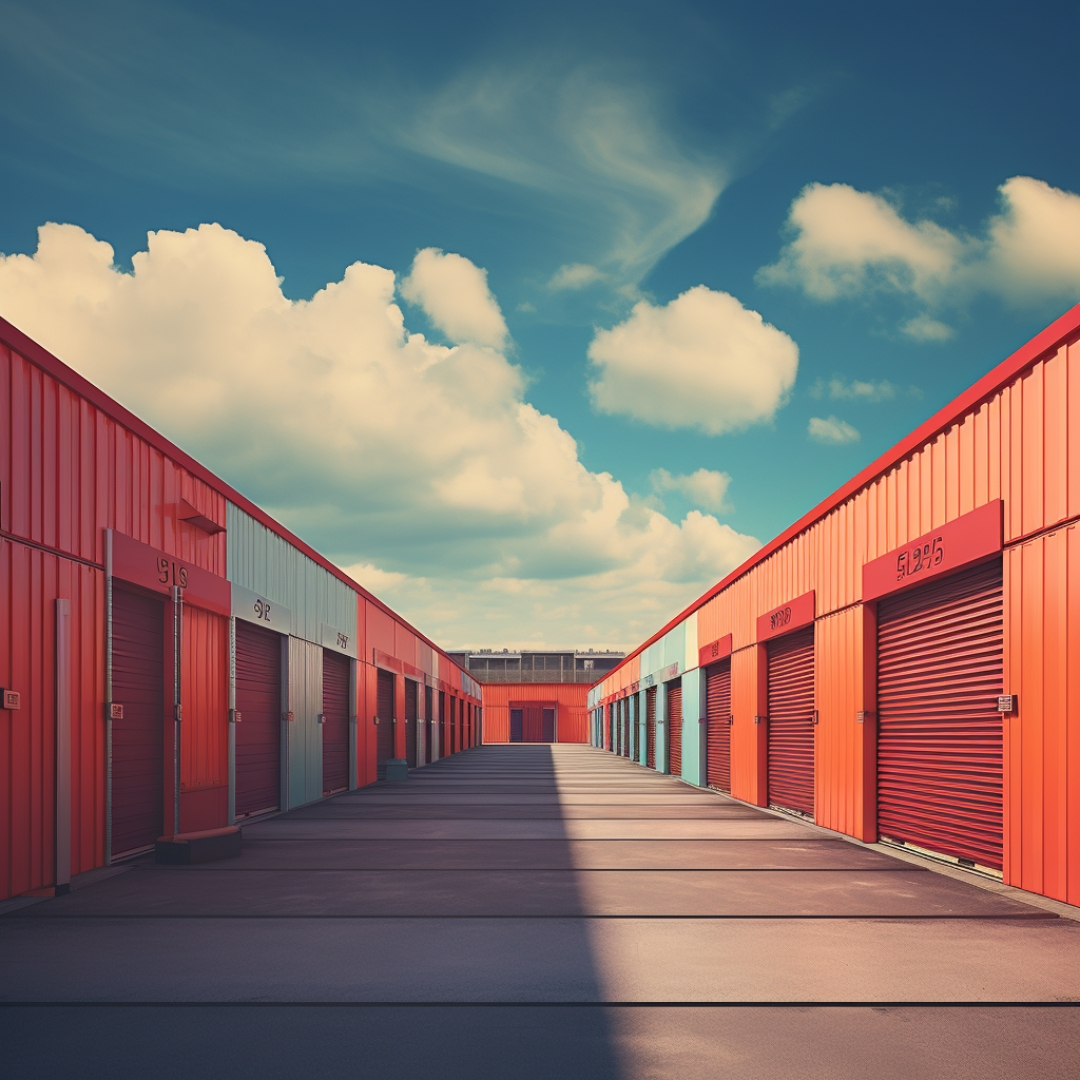
Are you considering venturing into the world of storage units? With a vast array of possibilities and a consistently growing industry, building storage units can be a lucrative endeavor. In this ultimate guide, you will find everything you need to know about constructing your own storage units, from types of facilities and location assessment to construction costs, design considerations, and financing options.

In our modern, busy world, storage space has become a valuable commodity. The self storage industry, with its storage facilities, is designed to cater to the varied needs of individuals and businesses alike. The primary types of storage units include:
Each type of storage unit has unique features and construction costs to consider.
Comprehending the differences among these options allows you to make decisive choices when establishing your storage business.
Warehouse storage facilities are:
A typical warehouse storage facility features:
Among other factors that contribute to self-storage operating expenses. Climate-controlled warehouse storage is particularly advantageous for storing temperature-sensitive items, providing added value and attracting a wider range of customers.
Container storage facilities offer the following benefits:
Although container storage facilities have several advantages, some drawbacks exist, such as:
The construction costs for container storage facilities range between $45 and $75 per square foot for a multi-story facility and $50 to $65 per square foot for a single-story facility, excluding land and site improvement costs.
Lock-up garages are compact and cost-effective storage options, typically providing around 124 square feet of storage area. These smaller storage units can be easily built in residential areas, offering more affordable storage solutions for customers who require less space.
The security at lock-up garages is usually lower than that of warehouse storage facilities and is dependent on the quality of garage doors. The estimated construction cost for lock-up garages utilized as storage units ranges between $25 and $45 per square foot for a single-story facility.
Removal depositories are secure facilities designed to store furniture and belongings during moves. They are available in both single and multi-story options, providing a range of choices for customers.
Multi-story removal depositories offer high-security measures, climate-controlled conditions, and the capacity to store items between moves. Utilizing a removal depository during a move provides temporary storage, flexibility, security, convenience, and peace of mind for customers who need to store their belongings during a transition.

When building storage units, assessing land and location is of paramount importance. Factors such as:
play a crucial role in determining the success of your storage unit business. A careful evaluation of these aspects guarantees the feasibility of your storage facility project, optimizing its profit potential.
Zoning and permits are critical factors in determining the feasibility of building a storage unit facility in a specific location. Zoning regulations for constructing storage facilities may differ based on local municipalities, but generally, self-storage facilities fall under commercial or industrial zoning designations. Obtaining zoning approval for a self-storage facility can be challenging, as it may encounter opposition from government officials and local residents.
To obtain a permit for building a storage facility, you will need to:
Consultation with local authorities is a necessary step to acquire accurate information and guidance during the zoning and permit process.
Accessibility and visibility are vital components in attracting customers and guaranteeing the success of a storage unit business. A highly visible location can be advantageous for drawing in customers, even if it comes at a higher cost. On the other hand, a location that is difficult to access or not visible from the main road can negatively impact the occupancy rate of an existing facility.
When selecting a location for a storage facility, consider factors such as:
Also, consider factors such as traffic counts, visibility, market analysis, and competition to make decisive choices about your storage facility’s location.
Building storage units involves various construction costs, including material, labor, and site preparation costs. Understanding the breakdown of these costs is essential for budgeting and planning your storage unit construction project. Accurate cost estimation helps you make decisive choices and avoid financial pitfalls during the construction process.
Material costs for storage units primarily involve steel, the most frequently used material for storage unit construction. The price of steel can vary based on:
The current average price per ton of steel is approximately $700. The typical costs of other materials necessary for storage unit construction can range from $25 to $70 per square foot. Accounting for material costs is a necessary step when creating a construction budget for your storage unit project.
Labor costs for building storage units depend on factors such as market rates, labor shortages, and land costs. A shortage of skilled labor can lead to increased wages and salaries for contractors, resulting in higher construction costs for clients. Moreover, labor shortages can cause project delays, as there may not be enough workers to complete the project on time, leading to additional costs and potential penalties for late completion.
The cost of labor for building a storage unit is $26 per square foot on average. This figure can vary depending on various factors. Labor costs can fluctuate based on factors such as location, size of the facility, and specific job roles within the facility.
Site preparation costs for storage unit construction vary based on factors such as terrain, vegetation, and other site-specific considerations. The typical range of site development costs for constructing a storage unit is between $4.25 and $8 per square foot.
Clearing the land, eliminating vegetation, and establishing drainage arrangements are some of the tasks involved in site preparation. Costs associated with clearing vegetation can range from $1,266 to $2,581, depending on the size and vegetation density of the site, while costs for grading a site can range from $5 to $10 per square foot. When creating a storage unit construction budget, site preparation costs must be considered.

Design and layout aspects, including unit mix and sizes, climate-controlled units, and security and access features, should be considered when constructing storage units. These elements play a critical role in the overall functionality and appeal of your storage facility, ultimately affecting customer satisfaction and business success.
The unit mix and sizes in a storage facility should cater to diverse customer needs, depending on the target market and location. Storage unit sizes typically range between 90 and 130 square feet, with the 10x10 unit being the most requested size.
To determine the optimal mix of storage unit sizes for a specific location, follow these steps:
Climate-controlled units offer added value by providing temperature and humidity control, protecting sensitive items from extreme temperatures and environmental factors. These units are ideal for storing:
The construction cost of climate-controlled storage units typically ranges from $25 to $70 per square foot. Offering climate-controlled units in your storage facility can attract a wider range of customers seeking to store temperature-sensitive items, increasing the overall appeal and profitability of your business.
Security and access features play a vital role in the success of a storage unit business. Advanced locks, automatic gates, and effective surveillance technology can help ensure the safety and security of your storage facility, protecting both customers and their belongings.
Automatic gates in storage facilities provide a secure and convenient way to manage access and ensure the safety of the facility and its contents. Real-time video surveillance systems, security cameras with reliable activity detection alerts, and internet-protocol cameras offer continuous monitoring, clear image capture, and remote viewing.
Implementing advanced security and access features can significantly enhance the value proposition of your storage facility.
Financing options for building storage units include:
Each of these options offers unique benefits and drawbacks, depending on your specific needs and financial situation.
Exploring diverse financing options allows you to determine the optimal approach to secure the necessary capital for your storage unit business construction.
Loans and SBA financing offer long-term financing options for storage unit businesses, with terms up to 25 years. The interest rates for these loans typically range from 4% to 13%, depending on the loan program and the maximum cap set by the SBA.
To qualify for a self-storage loan, a good credit score, a comprehensive business plan, a substantial down payment, and a competent management team are typically required. SBA 504 loans, SBA 7(A) loans, traditional bank loans, CMBS loans, and Life Company loans are among the common types of loans available for building storage units, offering various repayment terms and interest rates depending on the specific loan program.
Personal funds and investor partnerships can provide the necessary capital for building a self storage business, with a focus on expected internal rates of return. Typical sources of personal funds for constructing a storage unit business include:
The anticipated internal rate of return for a storage unit business is usually estimated to be between 15% and 18%. By pooling personal funds and partnering with investors, you can secure the financing needed to build your storage unit business and achieve a profitable return on investment.

Marketing and management strategies play a crucial role in the success of your storage unit business. Digital marketing and on-site management can help attract customers, increase visibility, and ensure smooth operations.
The implementation of effective marketing and management strategies has a significant impact on the overall success of your storage unit business.
Digital marketing, including search engine optimization and social media advertising, can help attract customers and increase visibility for storage unit businesses. Some effective SEO strategies for storage unit businesses include:
Facebook and Instagram are the most effective platforms for social media advertising in the storage unit industry. By implementing a comprehensive digital marketing strategy, you can reach a broader audience, attract potential customers, and boost the overall success of your storage unit business.
On-site management is crucial for ensuring smooth operations, customer satisfaction, and efficient use of resources in a storage unit business. The role of on-site management entails:
Effective on-site management contributes to customer satisfaction by providing convenient services, such as managing rent payments, financial transactions, and inventory storage. Additionally, on-site management offers immediate assistance and personalized customer service, resulting in enhanced customer satisfaction and increased customer loyalty.
In conclusion, building storage units can be a rewarding and lucrative business venture. By carefully considering the types of storage facilities, assessing land and location, understanding construction costs, and designing the layout with customer needs in mind, you can develop a successful storage unit business. Additionally, exploring various financing options, implementing effective marketing and management strategies, and ensuring secure and accessible facilities will contribute to your business’s overall success. Embark on your storage unit journey with confidence, armed with the knowledge and insights provided in this ultimate guide.
Self storage businesses have a 92% success rate and owners can expect an average profit of $184,500 per year - making it an extremely profitable venture.
If you don't have any start-up capital, consider applying for a small loan or leveraging Bartering. With the loan, find a storage facility that you can modify into units or lockers without too much effort and offer space in exchange for knowledge, products, or services your company needs. Install locks on all units and ensure there is a secure locking system in place.
A 10x10 storage unit is 10 feet wide and 10 feet long, providing 100 square feet of storage space - equivalent to a large family room or one-car garage.
To open a locked storage unit cylinder, insert the key into the dart opening at the top and turn it to unlock your unit.
It is usually cheaper to build your own storage building due to the fact that you would be doing all of the labor yourself and not having to hire shed builders.